#basque women
Note
I just found out that there's this stereotype in Spain that Basque females are ugly. Of course I know this is something stupid and false but I'd like to know where this specific cliche comes from!
Hugs!
Kaixo anon!
Short answer: it's just another form of Spanish supremacism.
Long answer: saying that women from a certain group of people are ugly (or extremely beautiful, it’s the same) is a form of:
- racism: because it implies beauty is a property of just certain ethnicities / races that have the privilege to set its standards.
- misogyny: men’s beauty is never discussed, while women are reduced to their good or bad looks.
You can make an experiment an type "Las vascas son" [Basque females are] on Google: it'll show you: ugly, weird, rude, etc. If you visit some those forums full of cavemen discussing the topic given in the results, you'll see there are recurring arguments:
Basque females are ugly because we're part of an inbred race.
the only pretty Basque women are the ones that are just Basque by birth, but of Castillian / Andalusian origin.
we're conceited as if we were the magnificent goddesses that we're not.
in Euskadi you can't get laid - and the fault is women's.
we're not femenine, and our personality is harsh and rude. While northern shyness is seen as “cute” in men, it’s seen as something unattractive in women, that are many times described as frigid.
So there you have the complete stereotype: ugly, inbred, delusional about our social role and our value as (ugly or pretty) women, rude and with harsh manners, non-feminine, and frigid. Some add homophobia to the mix and say most of us are clearly lesbians for all the aforementioned reasons.
It's just another side of oppression. Aside of reducing women to just something pretty or not, they're trying to say that their women (Spanish women) are better than ours (Basque women). They're inferior, and their kids will be inferior, and that makes us Basques as a whole, inferior. Basque women only become magically pretty if they have Spanish blood in them - understood as a lack of Basque surnames, but what these cavemen ignore is that many of the considered Spanish surnames are of Basque origin.
Misogyny and Spanish supremacy.
That's where it all comes from.
#euskadi#euskal herria#basque country#pais vasco#pays basque#basque women#stereotypes#anons#culture#oppression#personal#misogyny#beauty
22 notes
·
View notes
Text

Jana Jan - Harsh noise straight out of the Basque Country.
26 notes
·
View notes
Text
youtube
Anari - Topic - Harriak
0 notes
Text



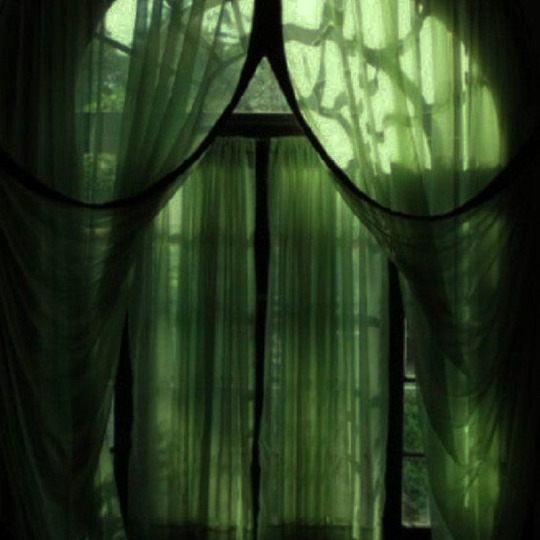





basque mythology: sorginak
sorginak often are said to transform themselves into animals, most commonly cats. these cats are sometimes said to bother pious women that do not wish to go the akelarre. it has also been recorded that they collected monetary fines from the people that did not wish to go to their ecstatic gatherings or those witches that absented themselves from them.
172 notes
·
View notes
Text
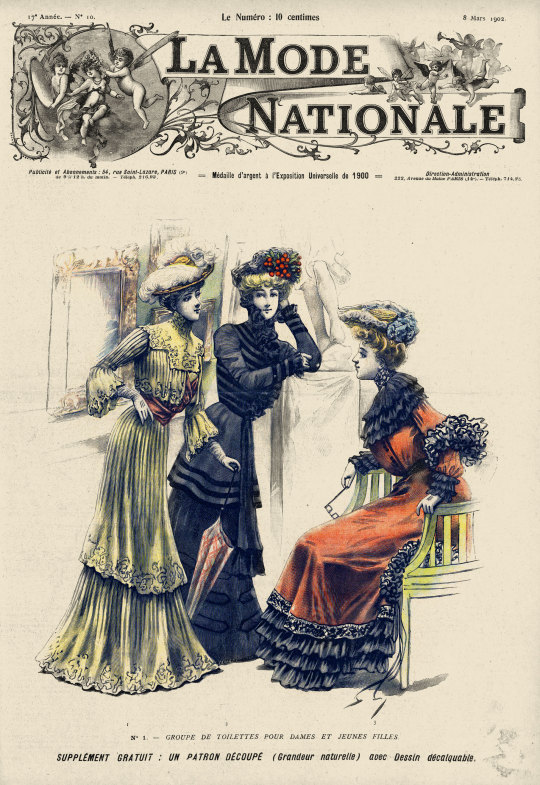
La Mode nationale, no. 10, 8 mars 1902, Paris. No. 1. — Groupe de toilettes pour dames et jeunes filles. Bibliothèque nationale de France
(1) Toilette de visites pour jeune femme ou jeune fille, en voile paille. La jupe courte et arrondie est plissée tout autour à repincés qui dans le bas restent libres; elle est dentelée et brodée en grosse laine et en soie de même ton. Elle tombe sur un très haut volant plissé et brodé simulant une seconde jupe. Ce volant est plus haut derrière que devant.
Boléro carré plissé et brodé comme la jupe ouvert sur un gilet croisé et drapé en satin liberty capucine rentré dans une ceinture drapée et en pointe. Grand col découpé en forme d'empiècement où se retrouve la même broderie. La manche est plissée jusqu'au coude pour fournir un haut volant également dentelé et brodé.
(1) Visiting ensemble for young women or girls, in straw veil. The short, rounded skirt is pleated all around with darts which remain free at the bottom; it is laced and embroidered in coarse wool and silk of the same tone. It falls on a very high pleated and embroidered ruffle simulating a second skirt. This steering wheel is higher behind than in front.
Square bolero, pleated and embroidered like the skirt, open over a double-breasted and draped cardigan in nasturtium liberty satin tucked into a draped, pointed belt. Large collar cut in the shape of a yoke where the same embroidery is found. The sleeve is pleated to the elbow to provide a ruffled top that is also laced and embroidered.
Matériaux: 8 mètres de voile; 1m,50 de satin liberty.
Chapeau en paille satin nuance blé à calotte haute, entouré de deux amazones blanches.
Wheat-colored satin straw hat with high crown, surrounded by two white Amazons.
—
(2) Robe de promenade pour jeune femme ou dame d'un certain âge, en drap satin noir. Jupe en forme garnie de straps à dépassants de velours. Veste façon Louis XV tout cerclée de velours noir, avec longue basque rapportée garnie de même. Manche à coude ornée de velours et terminée par un volant plissé en mousseline de soie noire. Col haut orné d'une ruche en mousseline de soie noire chenillée au bord jabotant jusqu'à la taille et finissant par un long pan avec petit volant.
(2) Walking dress for young women or ladies of a certain age, in black satin cloth. Shaped skirt trimmed with straps with velvet overhangs. Louis Elbow sleeve decorated with velvet and finished with a pleated ruffle in black silk chiffon. High collar decorated with a ruffle in black chenille silk chiffon with a ruffled edge reaching to the waist and ending in a long panel with a small ruffle.
Matériaux: 6 mètres de drap; 4 mètres de mousseline de soie.
Toque en dentelle de crin avec piquet de cerises.
Horsehair lace hat with cherry stake.
—
(3) Toilette de visites pour jeune femme, en étamine cordée rouge étrusque. Jupe en forme bordée d'un entre-deux de Cluny noir sur transparent blanc, tombant sur trois volants froncés en liberty noir. Corsage rentré dans la taille fermé de côté par des boutons noirs. Col montant de Cluny sur transparent blanc et grand col rond composé de trois volants en liberty rappelant ceux de la jupe. La manche est plissée à l'épaule et au bas et terminée par trois petits volants de liberty noir.
(3) Visiting ensemble for young women, in Etruscan red corded stamen. Shaped skirt bordered with a black Cluny in-between on transparent white, falling on three gathered ruffles in black liberty. Bodice tucked into the waist closed on the side with black buttons. Cluny stand-up collar on transparent white and large round collar made up of three liberty ruffles reminiscent of those on the skirt. The sleeve is pleated at the shoulder and at the bottom and finished with three small black liberty frills.
Matériaux: 6 mètres d'étamine; 7 mètres de liberty; 1 mètres de taffetas blanc.
Chapeau marquis en paille satin bordé de dentelle blanche et orné de choux en mousseline de soie ciel.
Marquis hat in satin straw edged with white lace and adorned with sky chiffon puffs.
#La Mode nationale#20th century#1900s#1902#on this day#March 8#periodical#fashion#fashion plate#cover#color#description#bibliothèque nationale de france#dress#collar
59 notes
·
View notes
Text


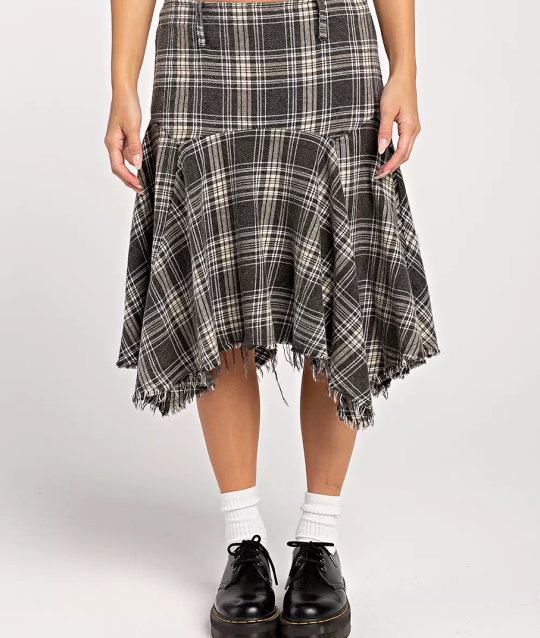

An outfit inspired by Violet’s in Open House. I think the skirt looks very similar to Violet's one!
Under shirt: RSQ Womens Seamless Textured Lace Scoop Neck Long Sleeve Tee in Blue
Tank: MANGO Women's Printed Chiffon Top in Russet
Skirt: BDG Urban Outfitters Basque Check Womens Midi Skirt
Cardigan: Daytrip Striped Cardigan Sweater
33 notes
·
View notes
Note
How do you feel about nation jobs or finances in your universe? Like are modern Matt or Alfred on government payroll even if they don’t do anything? I know you’re mentioned that Alfred is better at managing his money than Matt, is he rich??
Sorry I’m not phrasing this very well 😅
This is somewhat esoteric even for me, but I tied their abilities with money to their economic histories.
Alfred was born looking pretty pathetic next to the Spanish possessions in Mexico and South America or even British holdings in the Caribbean but, in short order, made up a significant percentage of the ships, people, and wealth of the British Empire. He became that on what was primarily the efforts of private enterprise. Alfred grows up understanding he is valuable; he represents value, and his choices create value. He's easy to love because he's a goddamn cash cow for Arthur until the Seven Years War when Britain spent a shit ton and wanted the Yanks to pay their share, and we threw a bitch fit and declared independence.
Matt, however, has the French bitching about what a money hole he is from about 20 minutes after he comes into being. The Basque, by far, made the most money initially with their fishing and whaling in the east, following what was reasonably similar to the Viking routes into Newfoundland. The fur trade that drove French settlement faced collapse about a half dozen times in his childhood, and besides a short binge economy for Ginseng and its brief boom in China, his entire existence was just fur. Dead beavers and the black market. That's it.
While the US was building ships, growing cash crops, running a fur trade economy, engaging in fishing, rope making, pitch collection, barrel making and everything and anything else, in the Caribbean, they had 90+ control over sugar production and trade routes. Canada had 10% of the population and thus 10% of the market power. We didn't do shit except freeze, fire at the British, commit war crimes against the New Englanders, ditch the farms and run off to the west to make families with indigenous women and run furs up the rivers to the point that France tried to make it illegal for people to leave the settlements of Quebec City and Montreal without permission.
So from a relatively early point, Alfred is very smart with his investments, and he's been making his investments since the early 19th century, so there's a significant but often catastrophically destroyed habit of investing. When he was younger and incredibly newly independent, he got fleeced a few times, but he's called smart and secure, especially since the 1929 crash. It's not remarkably large amounts of money because he'll never completely trust the government, and he doesn't want to attract attention or pay massive amounts of taxes, so he's very well diversified. But he's certainly not poor. All his more expensive hobbies come from a particular office in the state department that Alfred sometimes cooperates with and sometimes doesn't, depending on how anti-establishment he and the public feel.
As for Matt, having spent a lot longer as a colonial subject, it's not that he's entirely shit with money but what he knew how to do. The heart of the empire was the financial hub and was outside his control long after even the Confederation in the 1860s. The money situation has been a nightmare since the earliest days of the French Regime using playing cards to pay people. Colonial America had some similar issues. The whole concept of the US dollar originated in the 1690 invasion of Quebec when the Massachusetts Bay Colony printed its own money to fund the expedition, but Alexander Hamilton did some flash economic magic for the US in this department in the 1790s, so it got its shit together long before Canada. Matt knows what he needs to know. He was stationed in various Canadian ports, keeping an eye on his father's investments, not his own.
So, in the modern day, Alfred reads his bank statements every month, keeps track of his subscriptions and bills, and probably has an accountant. Matt is more aware of Alfred's money habits than his own. Because he's over here just kind of vaguely wondering if his debit card will work because my man cannot make heads or tails of his economy (no, seriously, Canadian economists have no idea how Canada's own shit works. Sometimes it's pretty fascinating, there's often no real consensus like the US academic economist have.) And international investors in Canada are always freaking out because the Canadian economy is always getting its shit rocked by the US economy. It's hilarious to think of people in Matt's life frustratedly trying to figure out where and what his money's doing. If their health is tied to their economies, Matt's in pretty good shape, thanks to close ties to the US, but he's randomly dying reasonably often because the US economy's tiny little ripples will randomly tear him apart. It's pretty funny (laughs so I don't sob in the Canadian job market.)
And that's pretty fitting, considering that most Canadian economic policy is boiled down to 'hope the Americans are feeling cooperative next time NAFTA comes up for debate.'
#the ask box || probis pateo#Alfred and Matt || lonely boys with the longest borders#Alfred || o beautiful for spacious skies#Matthew || my country is winter#meatsack mechanics || the sociology and biology of nations
58 notes
·
View notes
Note
I assume you heard of what the Real Madrid twitter account posted, how Franco was a supported of Barça? Amazing historical revisionism, as if Catalans weren't tortured or murdered for daring to speak their language, or how even one of the directors of Barça was murdered after being accused of defending the independence of Catalonia.
I'm sure they are aware they're lying, I don't believe someone would be so ignorant to make up something like that and somehow convince themselves of it.
Basically, if someone's not aware of what happened, Real Madrid published a video saying that FC Barcelona (Barça) was favoured by the Spanish fascist dictator Franco, which is false. The team that has always been associated with Francoist beliefs is Real Madrid, so I assume they want to distance themselves from that by accusing their main rival (Barça), who also happens to be a symbol of a minority (Catalans) that was one of the main groups targeted by Spanish fascism.
Some actual historical information about Franco and Barça:
1. In 1939, all football clubs that were federated in the Catalan Federation were banned from playing. All the players' contracts were cancelled. That includes Barça. Some months later, they were reformed and could continue existing with a completely different directors/administration board accepted by the regime. (Women are banned from this position, when Barça had la Sagi.) Copying the model of Mussolini's Italy, the Francoist dictatorship gave control of sports to the Falange (the fascist party, the only party allowed) who controlled everything from the Delegación Nacional de Deportes (National Sports Delegation).
2. For the previous resolution, all of Barça's administratives are ceases and their names and files are given to the military police to control them. The board and administration of all the club was purged.
3. The regime sentenced to death and killed the president of Barça at the time (Josep Sunyol i Garriga) for being pro-Catalan.
The president of Real Madrid (Antonio Ortega) was also killed for being a communist. The difference is that nowadays, since the end of the dictatorship, Barça honours Josep Sunyol, while Madrid acts as if Antonio Ortega had never existed and doesn't have any space dedicated to him. Not only that, but if you look at Real Madrid's website, they leave an empty spot during the years that Antonio Ortega was president (1936-1939), pretending he never was and there simply was no president during those years.
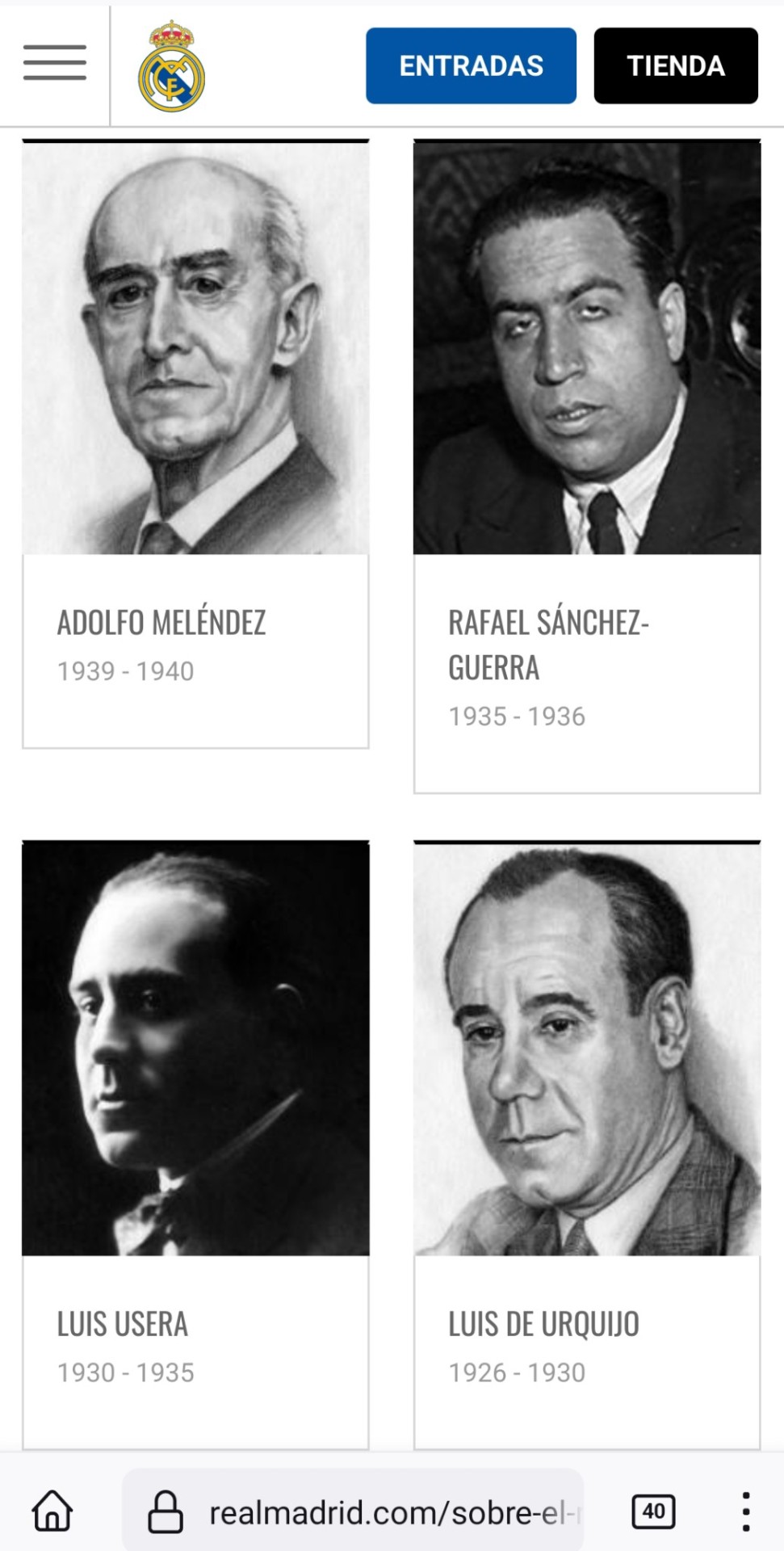
All the opposite, Real Madrid honours Santiago Bernabéu (the team's stadium is named after him), who worked to bring Real Madrid closer to the dictatorship. Even before Franco gained power, in the 1920s, he said that Real Madrid defends "the Spanish pride and cause". He later enlisted in the Spanish army and joined the fascists in their coup d'etat that led to the Spanish Civil War.
4. Barça had to change their entrance tickets and their name to Spanish following Franco's illegalization of the Catalan language. It stoped being called "Futbol Club Barcelona" (Catalan) and had to be called "Club de Fútbol Barcelona" (Spanish). Consequently, the letters in the club's shield were consequently changed from F.C.B. to C.F.B. The club wouldn't get their original Catalan name back until 1973.
5. Removed the Catalan flag from Barça's shield. They had to have 2 red bars instead of the 4 bars of the Catalan flag. Later they could get it back because Barça's shield is based on the shield of the city of Barcelona, so they alleged it's just a symbol of the city.
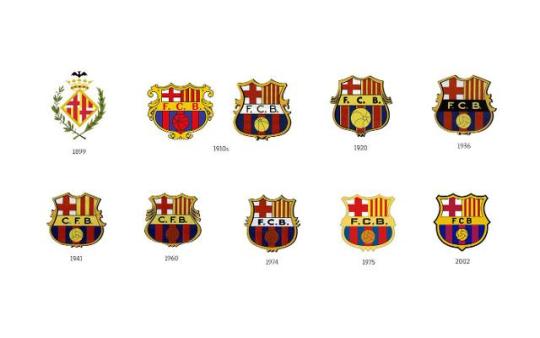
6. Instrumentalized Barça and Athletic de Bilbao against Catalan and Basque people, since the regime identified Barça and Athletic de Bilbao as the teams that symbolise these two minority nations and their independentism. Their first match after the war was scheduled by the regime, a Barça vs Athletic de Bilbao where the whole stadium was wrapped in huge Spanish flags and were various fascist gave speeches in favour of Franco and Spanish unity, including the general Álvarez-Arenas who talked about the purges by saying he praised Barça for "having thrown away forever the anti-Spanish seed, exposing their idea of what sport entities must be patriotically, the true healthy sport to educate the masses" ("que ha sabido arrojar para siempre la semilla de los antiespañoles, exponiendo su idea de lo que patrióticamente han de ser las entidades deportivas, el verdadero n del deporte sano y educativo de multitudes").
7. The regime abolished the Catalonia League, where Barça played.
8. More purges in Barça followed after that first one. The dictatorship carried out in-depth investigations into Barça's directives and members to find people who fought for Catalan rights. Some people were accused for being in the Barça directive. Here's some extracts from the letter where the leader of the fascist police in Barcelona, Luis Martí Olivares, sent to order the arrest of some Barça directives and to order them to be taken to Madrid for trial:
In front of the statue of Casanovas, they used to celebrate acts of separatist affirmation [...]. All the directives, players and members [of Futbol Club Barcelona] have always attended it with flower crowns, offerings with the shield of the "F.C. BARCELONA"
Another one by him:
It's publicly known that the "F.C. BARCELONA" has always been political, at the beginning pro-Catalan and since a long time ago frankly separatist and for this reason they have exploited their rivalry with R.C.D. ESPAÑOL, which has been precisely the only Football Club in Catalonia that has signified themselves as a true pro-Spanish. In the matches between these two Clubs, the Barcelona fans considered the Spanishists to be foreigners, because they spoke in Spanish.
After the purges, the new dictatorship-approved directive board of Barça was made (for the 1st time in the club's history) of people who were not even members of the club. Many of them were fervent Espanyol fans, not Barça fans.
Most of their first decisions were political, including the fact that they removed the club's founder Joan Gamper as honorary president and declared the new honorary president to be the Spanish fascist general Múgica.
They also made the players taka a flower crown to the founder of Spanish fascism José Antonio Primo de Rivera, which had the Spanish flag and the Barça flag and inscription "F.C. Barcelona to José Antonio".
One of Barça's directors during the dictatorship was actually a paying Espanyol member during his time as Barça president, another director was an army general that was appointed directed by the higher spheres of the dictatorship and who openly said he was directing Barça simply because "as soldier with discipline I'm following orders".
9. Finally, in June 1946, the members of the Barça board who were actually Barça fans and cared for the club mass resigned and pressured the director to stop being a club under direct control of the dictatorship's government. Their protest resulted in the end of the regime's direct intervention, and after 10 years Barça could go back to having a new directive board, this time mostly made up of people who had always been Barça fans, though the regime still only allowed people who were officially approved.
So while Barça was directed by people who didn't care about the club and who were very badly coordinated and later was starting to re-order itself (still only with approved people), Real Madrid had its golden age, under the director Santiago Bernabéu (who was defined as "he's what Philip II was to Spain: its best king" and as we've explained before was a fascist) and a director board that had close ties to the fascist government.
The club that was most favoured by the regime during its first years was Atlético de Madrid (at the time called Atlético Aviación) which was related to the Army. But the president of Real Madrid Santiago Bernabéu got the club closer to the dictatorship and made it become the regime's favourite from the late 1950s on. Real Madrid played a very important role in fascist Spain's public relations, because that's the historical period that ended the autarchy and when fascist Spain was accepted in the UN and kept the dictatorship with the agreement of the other countries. Real Madrid acted as a political and cultural ambassador of fascist Spain in other countries. In return it received favours from the dictatorship. For example, the regime changed the sports clubs' status so that Madrid could hire Alfredo Di Stefano instead of Barça in 1953. Barça had already closed the case and the club and the player were ready to sign, but the dictatorship's direct intervention stopped it.
10. Since speaking Catalan was banned, some Catalan traditions were banned, even some Catalan songs were banned, and everyone was forced to be Spanish and a Spanish nationalist, with the National-Catholic morale imposed in every aspect of life, Barça became the place to express Catalanity. People used to go cheer for Barça as the "allowed"/hidden way of cheering against Francoism and in favour of Catalonia. This sentiment was well represented by the song "Botifarra de pagès" by the Catalan humour band La Trinca, which they released in 1974:
youtube
If you don't speak Catalan, the whole song is about how Catalans cheer for Barça as a representation of cheering for Catalan rights and link how well Barça is doing at the time with Catalanism ("l'any que ve no farem riure, visca Catalunya ------" = "next year we [Barça] won't be laughable, long live free Catalonia!" with a peeeeeep over where the word "free" woul have been) with cultural references. For example, they sing the tempo of sardanes with the name Cruyff, and change the famous quote "som i serem gent catalana, tant si es vol com si no es vol" (we are and we will be Catalan people, wether they want it or not) from the song La santa espina (song forbidden during Franco's dictatorship) with "som i serem socis del Barça, tan si es vol com si no es vol" (we are and we will be Barça fans, wether they want it or not).
11. Regardless of the club's significance to the population (because, let's be honest, everyone knew what Barça meant), it was still a club that existed under a fascist dictatorship. During the dictatorship, only approved or appointed people held office and had the power to take decisions. And if you were in that position were you had been approved, even if you had your secret political beliefs and actions, there was only so much you could do in public before getting fired, arrested, banned for life from your job, get you and your family on a watchlist and likely get tortured.
One of the "unwritten rules" during the dictatorship was that anyone who created a prize or medal had to give the 1st to Franco. Barça did that too, but they have later addressed it and taken it back.
12. In the semifinals of 1942-1943 season, Barça won against Real Madrid by 3-0. On the return match, the dictatorship's police went down to the dressing rooms to intimidate the Barça players so they would let Madrid win. The result was 11-1 (Madrid victory), which effectively gave victory of the league to Real Madrid.
13. Dictator Franco, personally, was a follower of Real Madrid. It's known that he used to comment the lineups with his officers.
---------
Since Real Madrid published that video some days ago, so many Spanish newspapers, magazines and TV channels have talked at length about how Barça actually helped Franco. They use as excuse the fact that the Barça under the dictatorship's control (because remember that the dictatorship chose who would lead the team, even when these people weren't Barça fans it only mattered that they were fascists) gave condecorations to the regime officials. This is worth remembering and worth criticizing, but this says more about the dictatorship than it says about Barça, especially if they want it to represent nowadays Barça. Because the thing is that this is no secret, and Barça has already addressed it in the past: in 2019, Barça officially withdrew all the medals given to Franco officials. Real Madrid still honours fascists and erases their antifascist director, and knows that they're a symbol of Spanish nationalism.
However, it seems like the people who so quickly want to run to talk shit about anything that has to do with Catalonia don't usually keep the same energy to criticize the dictatorship itself and how it intervened every aspect of life, crushing dissidence and national minorities in everything, even their hobbies, nor to make the same criticisms of Real Madrid, because it's not just about Barça but a way to attack Catalan society.
#ask#anonymous#futbol#història#barça#esports#futbol club barcelona#fc barcelona#barca#football#european football#la liga#history#sports history#francoism#1940s#20th century history#spain#barcelona
187 notes
·
View notes
Text
It was the literary scandal of the decade, the ultimate betrayal and, it turned out, the end of Truman Capote’s career. Published in Esquire in November 1975, “La Côte Basque 1965”, an excerpt from Capote’s then-forthcoming novel Answered Prayers, saw the celebrated writer share the innermost secrets (and most scandalous gossip) entrusted to him by his beloved Swans, the wealthy and glamorous group of high-society women that included Babe Paley, Slim Keith, Gloria Guinness, Lee Radziwill, Marella Agnelli and CZ Guest.
Visceral in its revelations of substance abuse, sexual assault, a murder cover-up, a graphic description of extra-marital period sex and, to top it off, bestiality, the article was a sensation for all the wrong reasons. It saw Capote deserted by his closest friends and shunned from the New York clique he had yearned to be a part of growing up – and, against the odds, had managed to infiltrate as an adult thanks to the success of his novels In Cold Blood and Breakfast at Tiffany’s.
Capote’s questionable actions (and the irresistible drama they precipitated) form the backbone of Ryan Murphy’s long-awaited Feud, inspired by Laurence Leamer’s bestselling 2021 book, Capote’s Women. An all-star cast will bring the man and his muses back to life when the Gus Van Sant-directed series premieres this month on FX in the US, but what was the real-life fallout from the publication of “La Côte Basque 1965” like for Capote and co?
“He never recovered from it,” says Ebs Burnough, director of the 2021 documentary The Capote Tapes, a five-year discovery project that saw him uncover hours of audio footage of Capote, and which gives the most thorough insight into the flawed figure to date. “[These were] friendships born and nurtured over 20-something years. All of a sudden, not one but all of his friends – who had been like his family, because he didn’t really have any family – were not speaking to him; there was literally nowhere for him to go. He was alone drinking, and the phone stopped ringing. He was a man alone on an island.”
Described by the New York Times as “the high-society temple of French cuisine”, La Côte Basque – just off Fifth Avenue and a stone’s throw from The Plaza – was a fine-dining eatery as famous for its juicy gossip as it was for its succulent Coeur de Filet Périgourdine. No one, however, dared to write about what was said and done there – until Capote. While his ostracising may seem like an obvious consequence for spilling society’s sordid secrets, Capote was flawed by the outrage.
Before publication, he boasted to People that he was planning on assassinating his characters with a pen instead of a gun: “There’s the handle, the trigger, the barrel, and, finally, the bullet. And when that bullet is fired from the gun, it’s going to come out with a speed and power like you’ve never seen – wham!”
Success was, in his head, assured, as Capote had been open about writing “La Côte Basque 1965”, bragging about the stories he would tell, continues Burnough. “He was working on that piece for over 20 years, so in his mind he didn’t anticipate the fall out because all of them knew he was working on it.” Upon the outrage, Capote was, “totally abandoned but also indignant”, he continues. “He even said, ‘Hey! What did they expect from me? I’m a writer!’”
Capote had form. “Remember, this was something he had done with Breakfast at Tiffany’s,” explains Burnough. “When you think about it, Holly Golightly is essentially a call girl, yet with Audrey Hepburn [playing her], and because it was so beautifully written, lots of New York socialites were saying, ‘Holly was based on me!’ There’s [even] a quote in The Capote Tapes where Babe’s daughter [Kate] says, ‘Mummy was so excited to be immortalised by such a famous author.’ So, I think he was certainly expecting great praise.”
Babe Paley was Capote’s most aggrieved victim of “La Côte Basque 1965”. In it, Slim Keith’s alias, Lady Ina Coolbirth, reveals to the fictionalised version of Capote, PB Jones, the story that Paley is said to have told Capote about catching her husband, CBS head Bill, in bed with another woman. When Capote rang the Paley household to see what they thought of “La Côte Basque”, Bill is said to have lied, claiming that it was thrown out before either of them could read it; a distraught Babe, who had read it, and who considered Capote her closest confidante, had terminal lung cancer at the time of its publication and never spoke to Capote again before her death in 1978.
Such dismissal of his work would have affected Capote, says Burnough, but the fallout from the Swans leaving him would have been even worse. “Babe Paley was his North Star. She was everything he aspired to be and everything his mother aspired to be. [His mother] had always wanted to be a socialite, so his obsession came from her wanting but not being a part of that world, and then abandoning him as a child. There’s a lot of mother psychology there.”
It makes total sense that Babe Paley was the victim of Capote’s worst betrayal, says Lisa Pomerantz, the New York-based brand expert with a lifelong obsession with Capote and his era of social commentators. “She was the one that opened up the most to him. He took total advantage of her because the others – Lee Radziwill, CZ Guest [et al] – were always more guarded,” she says. “The question is, did he do it knowingly? He was a tortured soul, mostly because of his relationship with his mother – that combined with his natural obsession with this aspirational life and Babe and Bill being the epitome of it.”
Having been sent from New Orleans to Alabama to be raised by relatives after his parents’ divorce, Capote is said to have been a lonely, introverted child searching for a sense of belonging. So why, having infiltrated the glitzy New York scene as a bonafide player, did he blow it all up?
In tandem with craving acceptance, psychologist Carolyn Mair muses that, deep down, Capote resented the world he had managed to become a part of. “People warmed to him and wanted to protect him as he projected an identity of both child and woman, yet his wit could be razor sharp. His ability to remember conversations verbatim made him a good source of gossip,” she says. “Yet as his psychological problems worsened, it seems reasonable to assume that his judgement also worsened.” Shocking others, she adds, “can also be a way of getting attention”.
The backlash from other circles would also have been keenly felt by Capote, continues Mair. “The Swans were the high society who lived aspirational lives and were the envy of women across the States and elsewhere,” she says. “Ordinary people would have read about these women and their lifestyles in the press and fashion magazines and would relate to them as if they were also their friends. The publication of ‘La Côte Basque 1965’ would likely have triggered a shocked sense of betrayal amongst the readers of popular and fashion press at the time.”
Perhaps the most interesting upshot of the “La Côte Basque 1965” scandal, though? The ways in which it laid the groundwork for tabloid culture, says Burnough. “This was an era [in America] when no one even talked about the fact that Franklin Roosevelt was in a wheelchair, let alone the affairs people were having, let alone as graphically as Truman did. As the late, great John Richardson said, ‘[Capote] took the lid off a pile of shit’ and it started the exposé culture we have today. It was a real ‘gotcha!’ moment for the rich and famous.”
25 notes
·
View notes
Photo

The colorful houses and boatwomen of Pasai Donibane.
These women worked rowing their boats from one side to the harbor to the other - moving cargos and people - from at least the 16th century until the beginning of the 20th.
In the pic you can see the traditional clothes they used to wear, shot in a moment of the annual festivities of the town, where a regatta is held and only women participate in an hommage to these generations of boatwomen.
Pic source
#euskadi#euskal herria#basque country#pais vasco#pays basque#pasai donibane#gipuzkoa#tradition#basque women#traditional costume#clothes#clothing#culture#history
45 notes
·
View notes
Text
maleah barzal




Malakai Elise Barzal
Career: Business Owner
Height: 5”6
Hometown: Coquitlam, British Columbia, Canada
College
Harvard University
Accepted in 2015 when she 16.
She got her Major Degree in Business Administration and her Minor in Fashion.
Received the Lucy Allen Paton Award in Humanities.
Received the Detur Book Prize.
Received the Louise Donovan Award.
Received the Artist Albert Alcalay Prize.
Received the Richard Glover Ames and Henry Russell Ames Award.
Received the Helen Choate Bell Prize.
Received the Carl Schurz Prize.
Received the Joseph Barrett Award.
Received the Harvard College Women’s Leadership Award.
Received the Sophia De Mello Breyner Andersen Prize
Received the Jeremy Belknap Prize.
Graduated the top of her class of 2020.
Languages she can speak
French
German
Portuguese
Spanish
Italian
Arabic
Swish German
Chinese
Japanese
Persian
Russian
Vietnamese
Mandarin
Turkish
Korean
Hindi
Bengali
Greek
Urdu
Indonesian
Marathi
Swedish
Latin
Hungarian
Polish
Thai
Icelandic
Cantonese
Serbian
Bulgarian
Czech
Mongolian
Basque
Danish
Dutch
Hebrew
Albanian
Ancient Greek
Egyptian
Babylonian
Business
She first sold a pieces of clothes when she was young at little set up shops, when she 15 she started her online business and started to sell clothes more often and had her first warehouse, she had pop up shops and eventually got her first real shop and it blew up even bigger and it she quickly needed more locations. Within in a few years she had hundreds of locations and skyline in New York City. By the time she was barely 19 she was already proffering millions of dollars. By 2021 she had one of the biggest companies in the whole world.
Her business name has always been τόλμη which means darling in Greek.
Personal
Born July 31, 1999
Daughter of Mike and Nadia
Has two siblings Matthew and Liana
#maleahbarzalau#nhl x reader#jack hughes#luke hughes#quinn hughes#john marino#john marino x oc#jm6#nico hischier x oc#nico hischier#nh13#nhl x oc#nhl blurbs#nhl blurb#nhl imagine#nhl fic#new jersey devils#nj devils#new york islanders#jh86#jack hughes x oc#luke hughes blurb#luke hughes x oc#quinn hughes x oc
37 notes
·
View notes
Note
OMG if you have any HCs about female Goblins, I would love to hear them :D x
omg yes I do! thank you for asking.
So first of all names. Female names often feature “s” or “z” sounds, which are considered sharp, snappy, and fresh– feminine traits in goblin culture. They often end with “i” or “a” sounds. Many of these I borrowed from Euskera (the basque language) because I love how they sound. Examples:
Adartza, Arantza, Eguzki, Garazi, Isaskun, Itziar, Joska, Nadezhda, Saveka, Sigdrífa, Revka, Rifavka, Rizakva, Urdza, Urzuri, Zevka, Zigrífa.
So I don't see goblins as having very strict gender roles at all. However I do headcanon that wizards actually see very little of goblin society- they only really interact with banking goblins, which is just one faction, the smallest out of three; the other two being miners and artisans. The divisions between genders/factions aren't very strict, they're fairly permissive because goblins prize talent above all. So if a child is born to a mining family but shows a talent for smithing they will happily be accepted in their new role. Usually banking goblins are those descended from Gringott in a huge extended family (extended to the point that most don't know each other) but anyone with a head for numbers or diplomacy with humans are also offered a role.
The fact that humans only really ever see banking goblins has caused a lot of misconceptions about their society among humans; for instance that they're obsessed with money. Miners and artisans don't give a shit as they have a trade-based system internally, and gold is viewed as a form of exerting some influence or control over wizarding society. There's no real artistry going into making coins, so they don't really value it- this is why they have so much disdain for wizards who buy goblin artifacts, they view monetary transactions as inherently meaningless. (that being said, some banking goblins who are more integrated with wizards do prize money and take part in gambling etc)
However there is a sort of reverence/protectiveness towards female goblins that might border on patronising. Female banking goblins therefore interact little with humans, but that doesn't mean they don't have important/leadership roles, they just work (usually) in the background. One reason for this protectiveness is that goblin women live much longer than the men and eventually form most of the Grauld (gra = people/goblins, uld = old) or the council of elders, which is the goblin leadership.
I do have a goblin OC named Sigdrífa who features fairly prominently in my fic, and she's rare in that she does interact with the Ministry. This is because she's one of the leaders of Gravak Leshak (literally, "goblin freedom", known by humans as the Goblin Liberation Front) during the 70s- basically a resistance group with ties to Gringotts Bank, which historically has used violence as well as strikes and picketing to advocate for goblin interests. Essentially her sheer influence among the goblins has made her impossible to ignore. She also has a half-sister, the half-goblin Isadora Pirbright, who is a reknowned wizarding smith and inventor. Sigdrífa resents her father for taking up with a wand-carrier but ultimately she does love her sister.
#artemisia-black#thank you!! i can talk more about this hahah#i also have a whole thing about basque wizards and goblins who historically had much better relations than other groups of humans#to the point goblins actually have some respect for the language and culture#obv the spanish ministry has done their best to destroy this.#goblins#headcanon
20 notes
·
View notes
Text
Ashen Wolves + Jeritza Modern AU HCs
Ashen Wolves in my fic (read it, it's funny) I couldn't fit everything in putting it all here
Yuri
Works at the bar Abyss (which has a secret BDSM dungeon in the basement)
Lives in a punk house with the others and unfortunately (but unsurprisingly) the only one responsible enough to pay rent
Everything else is a gamble. Will they have electricity this month? Water? Eh ¯\_(ツ)_/¯
“Hey wanna go out? I know a place” (takes them to the health food dumpster that tosses out perfectly good packaged food)
“Am I scared of twink death? Please.”
SWer out of necessity, sends most of the money he makes back to his disabled mom
(TW human trafficking mention) Yuri's father met his mother, a young poor vietnamese women. He promise he'd take care of her give her a better life in UK. Yeah right. Due to everything, she's extremely traumatized and unable to work.
Because of his and his mother's trauma, extremely protective of the most vulnerable in his community(women, children, immigrants, pwMI)
Balthus
New Jersey represent 🦅🦅🦅🦅🦅
Italian-American. Always correcting everyone on how to actually pronounce Italian words
Got into a tinyyyy minor disagreement with the mob and, in short, he owes them like gazillion dollars
Half-ass faked his death (so much party city fake blood) and is hiding out in Europe
He wears a fake mustache and puts on a fake Italian accent whenever he's in public
Sells drugs to the Garreg Mach kids.
“Balthus get a job.” “I have a business” “Isn’t that why you had to leave the States?”
The only one not to have a room. He sleeps on the couch (he had an air mattress. Had.)
Constance
In the late 1800s/early 1900s, her ancestor founded Nuvelle Inc., a pharmaceutical and biotechnology corporation
Her great-grandfather publically sided with the Republicans in the Spanish Civil War since he was in support of Basque Independence. Later assassinated by the fascist government in retaliation
Later, Constance's grandfather got backstabbed by his board and fired from the company
Her family was in denial about the whole thing and desperate to keep up with the appearance of wealth and continue to spend a lot of money. By the time Constance was born, they was in loads of debt
(tw suicide mention) Lost her mother in an accident. Then her father committed suicide, leaving Constance an orphan by 13.
Used the little inheritance she had to go to Garreg Mach and pretend everything was ok. Would lie anytime someone asked about her home life. Was forced to drop out at 16 because she ran out of money. To embarrassed to ask for help, she lied to everyone and told them she was going to study in the states
Yuri found her sleeping on a bench and took her in. Offered to buy her a ticket home until she finally admitted she lost everything and has no home to go back to
Dumpster drives at Garreg Mach for designer clothes. Ridiculous how much these rich kids (Hilda) toss out
Hapi
Romani :)
Ran away from home when she was a teenager to “see the world.” Unfortunately, got taken in by some questionable people
Cordelia found her and just felt so bad for her :( “oh no, a poor brown girl in need of help.” Offered to take her in and promised to help her get back home
Bullshit.
Finally able to run away and flee the country. She meets Balthus and Yuri because they were dumpster diving at the same spot.
She and Constance have this thing of getting naked and howling at the full moon each month
Emile Jeritza
Born into a religious cult in good old USA 🇺🇸 His father was the cult leader and had multiple wives.
His mother had a child from a previous relationship. Despite having numerous half-siblings, Emile was only close to Mercedes. She was the only one who didn’t scold him for crying and having “feminine” feelings after all
One day, his mother and beloved sister disappear. He never even got to say goodbye..
unbeknownst to him, when his mother and sister left they were fleeing for their lives. His mother immediately started to fight for custody of him but she was not an American citizen (while Emile and dad were) and she was trying to take him back to Europe
When Emile found out about what his father did, he…
On the run from the FBI :)
The wolves know about his history but fuck his dad, mofo had it coming.
Yuri was standing behind Jeritza at the store when he saw Jeritza didn’t have enough money for food and cat food. He told the cash register to put the sandwich back. Yuri bought him the sandwich.
#fe3h#fe3houses#ashen wolves#three hopes#three houses#fe16#fire emblem#fire emblem three houses#yuri leclerc#constance von nuvelle#balthus von albrecht#hapi fire emblem#hapi fe3h#usaigi speaks#fire emblem fanfiction#fire emblem headcanons
32 notes
·
View notes
Text
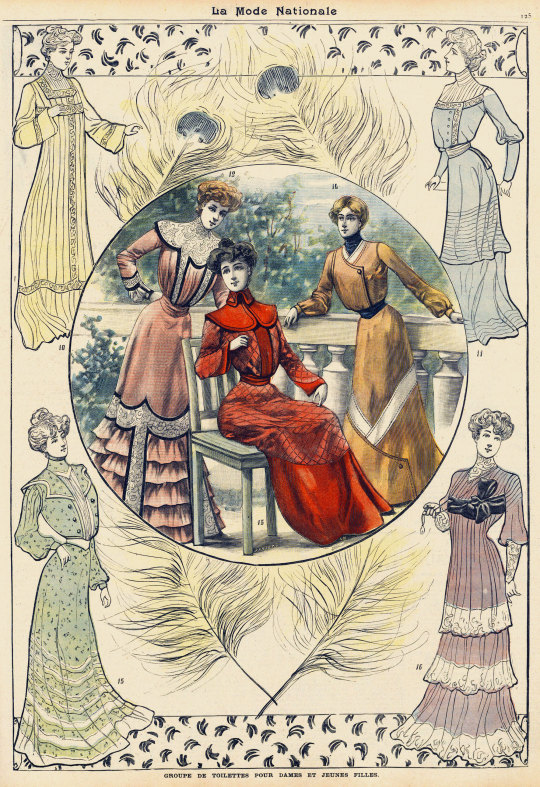
La Mode nationale, no. 16, 19 avril 1902, Paris. Groupe de toilettes pour dames et jeunes filles. Bibliothèque nationale de France
(10) Robe d'intérieur pour jeune femme ou dame d'âge moyen en fantaisie beige. Robe droite à plis repincés; formant dans le bas un volant auquel une broderie ton sur ton sert de tête. Même broderie devant; même broderie dessinant l'empiècement. Décolleté carré sur une guimpe de linon blanc; col brodé. Manche droite, large, ornée de broderie.
(10) House dress for young woman or middle-aged lady in fancy beige. Straight dress with re-pinched pleats; forming a ruffle at the bottom to which tone-on-tone embroidery serves as a head. Same embroidery on the front; same embroidery drawing the yoke. Square neckline on a white lawn wimple; embroidered collar. Straight, wide sleeve, decorated with embroidery.
Matériaux: 7m,50 de lainage.
—
(11) Robe de visites pour jeune femme ou jeune fille, en voile bleu-pastel. Sur une première jupe à plis fins, tombe une seconde jupe également plissée à repincés. Corsage blouse décolleté entre-deux de guipure descendant pour dissimuler la fermeture. Basque rapportée derrière. Manche large, resserrée au coude, par un bouquet de fronces; ceinture drapée de soie blanche.
(11) Visiting dress for young woman or girl, in pastel blue voile. On top of a first skirt with fine pleats, falls a second skirt also with re-pinched pleats. Blouse bodice with insertion neckline and guipure descending to conceal the closure. Basque attached behind. Wide sleeve, tightened at the elbow, with a bunch of gathers; belt draped in white silk.
Matériaux: 10 mètres de voile bleu; 2 mètres de mousseline de soie; 0m,60 soie blanche.
—
(12) Robe élégante pour jeune femme, en bengaline rose bengale. Jupe en forme terminée par cinq volants un peu froncés. Au-dessus des volants, entre-deux de guipure en forme de dents rondes et faisant deux quilles de chaque côté du tablier. Des dépassants de taffetas noir encadrent l'entre-deux. Corsage froncé, voilé d'un grand col de guipure et de deux pattes rappelant la garniture de la jupe. La manche s'écourte sur un bouffant en mousseline de soie blanche.
(12) Elegant dress for young women, in bengal pink bengaline. Shaped skirt finished with five slightly gathered ruffles. Above the ruffles, guipure inlays in the shape of round teeth and making two keels on each side of the apron. Black taffeta overhangs frame the space in between. Gathered bodice, veiled with a large guipure collar and two tabs reminiscent of the skirt's trim. The sleeve is shortened on a white silk chiffon bouffant.
Matériaux: 10 mètres de bengaline; guipure en laize.
—
(13) Robe de ville pour jeune femme ou jeune fille. Jupe en lainage vieux rouge quadrillé bordée en forme d'un volant plat en taffetas rouge "légion d'honneur". Corsage-blouse, fermé devant sous une large patte de taffetas. Col en forme en taffetas et petit col rabattu en lainage bordé d'un biais de soie. Manche droite terminée par un biais remontant en taffetas.
(13) City dress for young women or girls. Skirt in old red checkered wool lined in the shape of a flat ruffle in red “legion of honor” taffeta. Blouse-bodice, closed in front under a large taffeta tab. Shaped collar in taffeta and small turn-down collar in wool edged with silk bias. Straight sleeve finished with a rising taffeta bias.
Matériaux: 5 mètres de lainage; 6 mètres de taffetas.
—
(14) Robe simple pour jeune femme ou jeune fille, en suédoise d'été "son mouillé". Jupe en forme ornée d'un biais en forme piqué et fixé de côté par un bouton fantaisie. Large biais de drap blanc piqué, posé en forme. Corsage croisé, décolleté sur un dessous de drap blanc; guimpe et ceinture en liberty saphir foncé. Manche froncée dans un poignet droit.
(14) Simple dress for young woman or girl, in Swedish summer "wet wool". Shaped skirt decorated with a pique-shaped bias and secured on the side with a fancy button. Large bias of white stitched cloth, laid in shape. Crossed bodice, neckline on a white cloth underside; gimp and belt in dark sapphire liberty. Sleeve gathered in a right cuff.
Matériaux: 5m,50 de lainage; 0m,50 de drap blanc.
—
(15) Robe de visites pour jeune femme ou jeune fille, en voile fleuri vert-d'eau. Jupe cerclée de biais de soie blanche. Boléro ouvert sur un dessous en mousseline de soie blanche. Hausse-col et col découpé liserés de biais blancs. Manche plissée à l'épaule et froncée dans un poignet droit. Ceinture à pointe en soie blanche.
(15) Visiting dress for young women or girls, in water-green floral voille. Skirt circled with white silk bias. Bolero open on a white silk chiffon underside. Ruffled collar and cut-out collar with white bias edging. Sleeve pleated at the shoulder and gathered at a straight cuff. White silk pointed belt.
Matériaux: 7 mètres de voile; 3 mètres de taffetas; 0m,60 de mousseline de soie.
—
(16) Robe de réception pour jeune femme ou dame d'âge moyen, en crêpe vieux rose. Robe composée de volants froncés bordés de dentelle; le devant est droit; les plis maintenus par une écharpe nouée en satin noir. Décolleté en V sur une guimpe de dentelle. Manche rayée en haut de repincés, froncés au-dessous du coude dans un poignet collant en dentelle à clair.
(16) Reception dress for young or middle-aged ladies, in old pink crepe. Dress composed of gathered ruffles edged with lace; the front is straight; the folds held by a tied black satin scarf. V-neckline on a lace wimple. Striped sleeve at the top, gathered below the elbow in a clear lace fitted cuff.
Matériaux: 12 mètres de crêpe.
#La Mode nationale#20th century#1900s#1902#on this day#April 19#periodical#fashion#fashion plate#color#description#bibliothèque nationale de france#dress#collar#house
27 notes
·
View notes
Text
On “Civilization” from The Dawn of Everything
One problem is that we’ve come to assume that ‘civilization’ refers, in origin, simply to the habit of living in cities. Cities, in turn, were thought to imply states. But as we’ve seen, that is not the case historically, or even etymologically. The word ‘civilization’ derives from Latin civilis, which actually refers to those qualities of political wisdom and mutual aid that permit societies to organize themselves through voluntary coalition. In other words, it originally meant the type of qualities exhibited by Andean ayllu associations or Basque villages, rather than Inca courtiers or Shang dynasts. If mutual aid, social co-operation, civic activism, hospitality or simply caring for others are the kind of things that really go to make civilizations, then this true history of civilization is only just starting to be written.
As we’ve been showing throughout this book, in all parts of the world small communities formed civilizations in that true sense of extended moral communities. Without permanent kings, bureaucrats or standing armies they fostered the growth of mathematical and calendrical knowledge. In some regions they pioneered metallurgy, the cultivation of olives, vines and date palms, or the invention of leavened bread and wheat beer; in others they domesticated maize and learned to extract poisons, medicines and mind-altering substances from plants. Civilizations, in this true sense, developed the major textile technologies applied to fabrics and basketry, the potter’s wheel, stone industries and beadwork, the sail and maritime navigation, and so on.
A moment’s reflection shows that women, their work, their concerns and innovations are at the core of this more accurate understanding of civilization. As we saw in earlier chapters, tracing the place of women in societies without writing often means using clues left, quite literally, in the fabric of material culture, such as painted ceramics that mimic both textile designs and female bodies in their forms and elaborate decorative structures. To take just two examples, it’s hard to believe that the kind of complex mathematical knowledge displayed in early Mesopotamian cuneiform documents or in the layout of Peru’s Chavín temples sprang fully formed from the mind of a male scribe or sculptor, like Athena from the head of Zeus. Far more likely, these represent knowledge accumulated in earlier times through concrete practices such as the solid geometry and applied calculus of weaving or beadwork. What until now has passed for ‘civilization’ might in fact be nothing more than a gendered appropriation – by men, etching their claims in stone – of some earlier system of knowledge that had women at its centre.
—The Dawn of Everything, Graeber and Wengrow
#civilization#history#anthropology#archaeology#political philosophy#human nature#sharing because I love this so much and need everyone to read it 🥲#finally some good fucking food#these guys spend the entire first chapter absolutely tearing apart all the enlightenment thinkers theories about social evolution#the dawn of everything
91 notes
·
View notes
Text
Yesterday was the day of the fight against AIDS and I wanted to give priority to that post that the band recomendation, so I post it now:
VULPES/VULPESS
(The name is a reference to foxes, that in spanish, the female "zorra" can also be used as the insult "bitch")
This basque group of four women was formed in 1982, beeing one of the first punk bands in Spain, they became more famous in 1983 when they went to the TV to sing their song "Me gusta ser una zorra" (I like to be a bitch), the song created a big scandal and that same year they decided to disband.



Music genre: punk rock
Political opinions: Their songs are mostly about the women's freedom, sexual freedom and punk subculture.
Polemics: Just that their songs are really direct, and because of that they had some problems.
Song recomendations: "Me gusta ser una zorra", "Sexo por la cara" and "Felipe es un punk"
#punk#punk rock#punk music#punk band#band recommendations#spanish punk#female punk#female band#female rock
51 notes
·
View notes